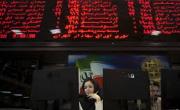Time to Buy Iran? Not Quite Yet
Iran: The Next Frontier?
Bibi Netanyahu and most of the U.S. Congress may still view Iran as an axis of evil. But a few brave analysts are starting to pitch it as something else: the next great emerging market. “Iran is the largest economy in the world by far that remains cut off from global markets,” says Charles Robertson, chief economist of Renaissance Capital, a London-based investment bank that had a good run in Russia and now wants to expand across the Middle East and Africa. “It’s like Turkey, but with 9% of the world’s oil reserves.”
Robertson’s bullish assumption is that any nukes-for-sanctions deal will throw open Iran’s investment gates whatever the next U.S. administration might do. European and Asian capitalists will not turn back so long as Tehran keeps its end of the bargain. They will capitalize on the country’s heretofore hidden advantages–a population of 81 million with a vigorous median age of 28, wages as low as Vietnam’s but much better education, and a diversified economy that has learned to make everything from cars to vodka during decades of isolation. “Iran is the only economy we have ever seen that has a positive trade balance in every one of 70 export categories, including alcohol,” says Robertson.
BUT INVESTORS, EVEN THOSE that circle the globe to beat the crowd into nascent frontier markets, seem unready to pull the trigger on Iran just yet. “Yes, the country has some macro advantages, but that doesn’t mean there is anything we would actually want to buy or a way for us to buy it,” says Alison Graham, founder and chief investment officer for New York-based Voltan Capital Management, which has been working in the frontier space for 15 years.
Iran does have a stock market, the Tehran Stock Exchange, with advertised market capitalization around $100 billion. The country went through a privatization process of sorts under President Hasan Rouhani’s predecessor, Mahmoud Ahmadinejad, and the companies on offer are reasonably diverse.
But these blue chips were “sold” to state-related entities like pension funds, meaning liquidity is suspect and a less-than-desirable hidden hand steering corporate governance from behind the scenes, Graham says. “Everybody is owned by somebody who is probably ultimately government-controlled,” she concludes.
Market infrastructure will also be a problem in a country that has been cut off from the Swift global system for bank wire transfers, Graham predicts. Under the best political scenario, Iran will take a few years to develop custody arrangements more foolproof than “sending a local broker funds and hoping for the best.”
For Laura Geritz, who manages Wasatch Funds’ $1.2 billion Wasatch Frontier Emerging Small Countries fund (ticker: WAFMX), Iran remains largely off-radar, though she is hyped about the prospects of Pakistan and planning a look-see trip to Ethiopia. One way to get indirect exposure to the market, she suggests, is through South Africa-based cellular operator MTN Group (MTN.South Africa), a 49% owner of Iran’s No. 2 service MTN Irancell.
RenCap’s Robertson argues that those who hesitate will miss the opportunity. The pension funds and other majority owners will be happy to sell down stakes and raise cash, he predicts, and an enthusiastic domestic retail base will provide a tail wind. The TSE Index more than doubled during 2013 as speculation started about an end to sanctions. It has only dropped by 11% since oil prices started to plummet last July. “A trip to Tehran is eye-opening,” Robertson says. “It’s full of people who are friendly, cultured and convinced that the U.S. is their natural ally.” Is that enough to spur an investment boom? We’ll see.


